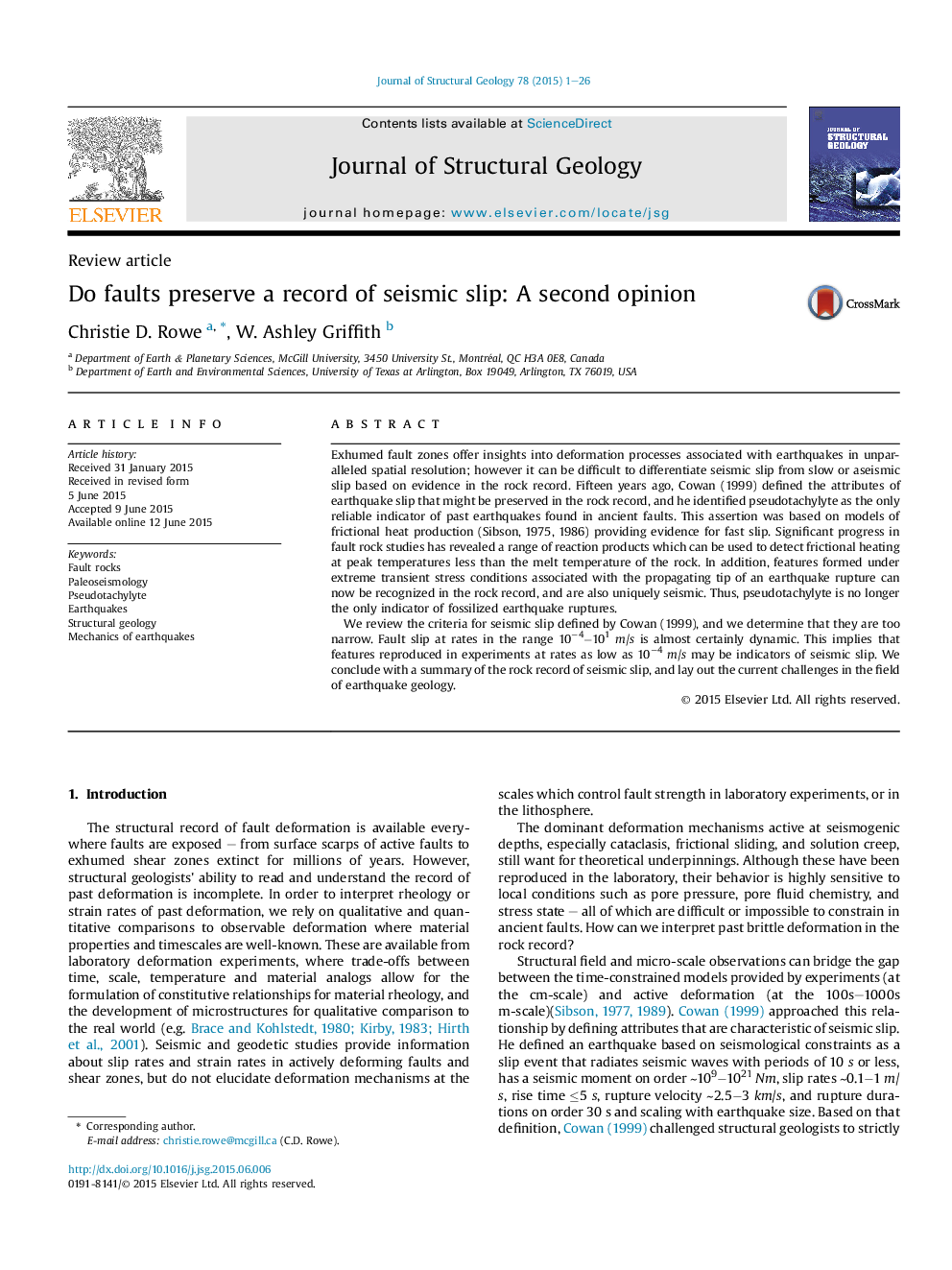| کد مقاله | کد نشریه | سال انتشار | مقاله انگلیسی | نسخه تمام متن |
|---|---|---|---|---|
| 4733007 | 1640502 | 2015 | 26 صفحه PDF | دانلود رایگان |
Exhumed fault zones offer insights into deformation processes associated with earthquakes in unparalleled spatial resolution; however it can be difficult to differentiate seismic slip from slow or aseismic slip based on evidence in the rock record. Fifteen years ago, Cowan (1999) defined the attributes of earthquake slip that might be preserved in the rock record, and he identified pseudotachylyte as the only reliable indicator of past earthquakes found in ancient faults. This assertion was based on models of frictional heat production (Sibson, 1975, 1986) providing evidence for fast slip. Significant progress in fault rock studies has revealed a range of reaction products which can be used to detect frictional heating at peak temperatures less than the melt temperature of the rock. In addition, features formed under extreme transient stress conditions associated with the propagating tip of an earthquake rupture can now be recognized in the rock record, and are also uniquely seismic. Thus, pseudotachylyte is no longer the only indicator of fossilized earthquake ruptures.We review the criteria for seismic slip defined by Cowan (1999), and we determine that they are too narrow. Fault slip at rates in the range 10−4−101 m/s is almost certainly dynamic. This implies that features reproduced in experiments at rates as low as 10−4 m/s may be indicators of seismic slip. We conclude with a summary of the rock record of seismic slip, and lay out the current challenges in the field of earthquake geology.
Journal: Journal of Structural Geology - Volume 78, September 2015, Pages 1–26
